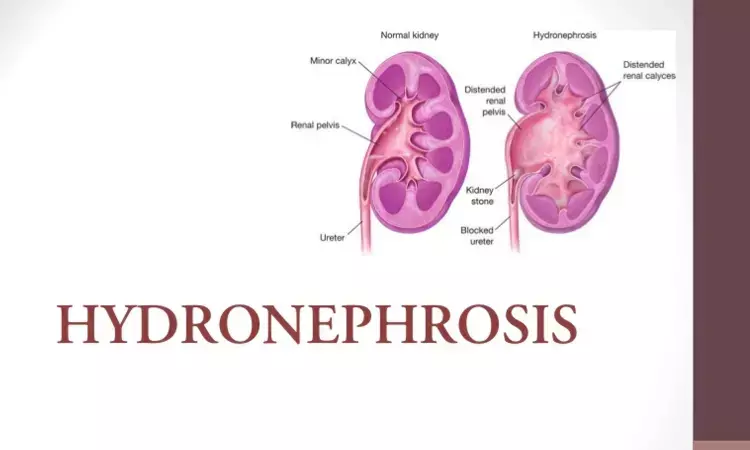- Home
- Medical news & Guidelines
- Anesthesiology
- Cardiology and CTVS
- Critical Care
- Dentistry
- Dermatology
- Diabetes and Endocrinology
- ENT
- Gastroenterology
- Medicine
- Nephrology
- Neurology
- Obstretics-Gynaecology
- Oncology
- Ophthalmology
- Orthopaedics
- Pediatrics-Neonatology
- Psychiatry
- Pulmonology
- Radiology
- Surgery
- Urology
- Laboratory Medicine
- Diet
- Nursing
- Paramedical
- Physiotherapy
- Health news
- Fact Check
- Bone Health Fact Check
- Brain Health Fact Check
- Cancer Related Fact Check
- Child Care Fact Check
- Dental and oral health fact check
- Diabetes and metabolic health fact check
- Diet and Nutrition Fact Check
- Eye and ENT Care Fact Check
- Fitness fact check
- Gut health fact check
- Heart health fact check
- Kidney health fact check
- Medical education fact check
- Men's health fact check
- Respiratory fact check
- Skin and hair care fact check
- Vaccine and Immunization fact check
- Women's health fact check
- AYUSH
- State News
- Andaman and Nicobar Islands
- Andhra Pradesh
- Arunachal Pradesh
- Assam
- Bihar
- Chandigarh
- Chattisgarh
- Dadra and Nagar Haveli
- Daman and Diu
- Delhi
- Goa
- Gujarat
- Haryana
- Himachal Pradesh
- Jammu & Kashmir
- Jharkhand
- Karnataka
- Kerala
- Ladakh
- Lakshadweep
- Madhya Pradesh
- Maharashtra
- Manipur
- Meghalaya
- Mizoram
- Nagaland
- Odisha
- Puducherry
- Punjab
- Rajasthan
- Sikkim
- Tamil Nadu
- Telangana
- Tripura
- Uttar Pradesh
- Uttrakhand
- West Bengal
- Medical Education
- Industry
Bladder outlet obstruction may not lead to hydronephrosis in some patients: Study

Hyderabad, India: Isolated bladder outlet obstruction in adult men with refractory non‐neurogenic lower urinary tract symptoms is not associated with hydronephrosis, suggests a recent study in the journal Neurourology and Urodynamics.
Bladder outlet obstruction is thought to cause hydronephrosis. Hydronephrosis is a classical indication for prostate surgery in patients with benign prostatic enlargement and considered a key factor by urologists. Some patients with bladder outlet obstruction may develop hydronephrosis but the relative importance ofassociated lower tract dysfunction such as abnormalities in bladder storage or detrusor contractility is not certain.
There is a lack of good evidence to either support or refute the contention that isolated bladder outlet obstruction in absence of of any other associated lower urinary tract ab-normality results in hydronephrosis. Evidence regarding this could help in understanding of fundamental biology and have significant implications for urological practice. Considering this, Sanjay Sinha and Lavina Matai from Apollo Hospital, Hyderabad, India, examined whether isolated bladder outlet obstruction in the absence of associated lower urinary tract abnormality results in hydronephrosis. Isolated obstruction causes a brief rise in bladder pressure that might not trigger hydronephrosis.
The study included 1596 men adult men who underwent urodynamics for refractory non‐neurogenic lower tract symptoms between 2011 and 2020. The researchers calculated International Continence Society indices for obstruction (bladder outlet obstruction index [BOOI] ≥ 40) and underactivity (bladder contractility index [BCI] < 100). Storage abnormality was defined as detrusor overactivity (DO) or poor compliance (<20 ml/cm H20). Isolated obstruction was defined as BOOI ≥ 40, BCI ≥ 100 and no storage abnormality.
Key findings of the study include:
- Hydronephrosis was noted in 17.2% of the men included. A total of 45.4% were obstructed, 52.3% were underactive and 41.7% had storage abnormality.
- Storage abnormality (odds ratios [OR], 2.05) and bladder contractility (OR, 1.68) but not obstruction (OR, 1.07) was associated with hydronephrosis.
- Of eight possible combinations, men with BOO ≥ 40, BCI ≥ 100 and storage abnormality had highest probability of hydronephrosis (OR, 0.29).
- Subanalysis showed that poor compliance (OR, 3.39) but not DO was associated with hydronephrosis.
- Younger age and higher postvoid residual urine were also associated with hydronephrosis.
"These findings suggest that the relatively brief rise in bladder pressureassociated with isolated bladder outlet obstruction isunlikely to result in hydronephrosis," concluded the authors.
The study, "Is isolated bladder outlet obstruction associated with hydronephrosis? A database analysis," is published in the journal Neurourology and Urodynamics.
DOI: https://onlinelibrary.wiley.com/doi/abs/10.1002/nau.24495
Dr Kamal Kant Kohli-MBBS, DTCD- a chest specialist with more than 30 years of practice and a flair for writing clinical articles, Dr Kamal Kant Kohli joined Medical Dialogues as a Chief Editor of Medical News. Besides writing articles, as an editor, he proofreads and verifies all the medical content published on Medical Dialogues including those coming from journals, studies,medical conferences,guidelines etc. Email: drkohli@medicaldialogues.in. Contact no. 011-43720751


